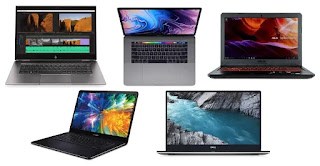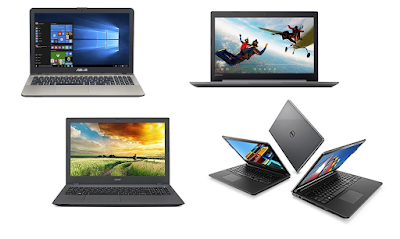Best Student laptop in 2020 | Best gaming laptop | Best Business laptop
It's back to school, college and university season, which means plenty of people are looking for the best student laptop of 2020.
 |
| Best-student-laptop |
About:
The good news is that online retailers are keen to shift laptops to students, and will usually offer a host of tempting deals and discounts to get you to part with your cash: and deals to tempt students in, so keep your eyes peeled for the best student discounts on laptops while you shop. You may end up spending less than you budgeted for.
So whether you're heading off to university, picking up your studies at home, or anything in between, use our guide to the overall best student laptop to narrow down a device that's perfect for you – one that has the features you need at a price that suits.
We hope our student laptop guide proves invaluable for anyone out there shopping for a system that's capable, decent value, and a boon to your productivity. We're constantly updating this list too with newer models and updated information, so be sure to keep checking back regularly, and we've also included some clutch buying advice to help you narrow down the ideal learning tool.
A laptop computer (also shortened to just laptop; or called a notebook computer) is a small, portable personal computer(PC) with a "clamshell" form factor, typically having a thin LCD or LED computer screen mounted on the inside of the upper lid of the clamshell and an alphanumeric keyboard on the inside of the lower lid. The clamshell is opened up to use the computer. Laptops are folded shut for transportation,
Category of laptop(Detail and price)
- Best laptop for Student
- Best laptop in lightweight
- Best tablet for kids
- Best gaming laptop
- Best laptop for Busisness
WHAT IS THE BEST STUDENT LAPTOP?
If you just want one single recommendation, then our top choice of best student laptop right now is the 2020 version of the excellent Dell. The new and improved model has it all – a powerful CPU, a versatile GPU and a great design. It'll cost you a bit but we reckon the outlay is worth it.
 |
| Best Dell laptop |
There's also the rather brilliant Accer to consider as well, a great all-round device that's ideal for all students – providing you're happy with Google's Chrome OS rather than Windows 10 or macOS, so make sure you understand what Chrome OS entails before buying.
 |
| Accer laptop |
For more information about both of these best student laptops in 2019, as well as more top notebook computers, then read on. Before we get to the main list, though, let's cover how to choose the best student laptop for you.
FEATURE OF LAPTOP
Hardware
The basic components of laptops function identically to their desktop counterparts. Traditionally they were miniaturized and adapted to mobile use, although desktop systems increasingly use the same smaller, lower-power parts which were originally developed for mobile use. The design restrictions on power, size, and cooling of laptops limit the maximum performance of laptop parts compared to that of desktop components, although that difference has increasingly narrowed.
In general, laptop components are not intended to be replaceable or upgradable, with the exception of components which can be detached, such as a battery or CD/CDR/DVD drive. This restriction is one of the major differences between laptops and desktop computers, because the large "tower" cases used in desktop computers are designed so that new motherboards, hard disks, sound cards, RAM, and other components can be added. In a very compact laptop, such as laplets, there may be no upgradeable components at all.
Intel, Asus, Compal, Quanta, and some other laptop manufacturers have created the Common Building Block standard for laptop parts to address some of the inefficiencies caused by the lack of standards and inability to upgrade components.
The following sections summarizes the differences and distinguishing features of laptop components in comparison to desktop personal computer parts.
Display
Internally, a display is an LCD panel which could be TFT backlit or LED backlit which talks to the laptop using the LVDS protocol, while externally, it can be a glossy screen or a matte screen. Most modern laptops feature a 13 inches (33 cm) or larger color active matrix display based on LED lighting with resolutions of 1280×800 (16:10) or 1366×768 (16:9) pixels and above. Models with LED-based lighting offer lesser power consumption and often increased brightness. Netbooks with a 10 inches (25 cm) or smaller screen typically use a resolution of 1024×600, while netbooks and subnotebooks with an 11.6 inches (29 cm) or 12 inches (30 cm) screen use standard notebook resolutions. Having a higher resolution display allows more items to fit onscreen at a time, improving the user's ability to multitask, although at the higher resolutions on smaller screens, the resolution may only serve to display sharper graphics and text rather than increasing the usable area. Since the introduction of the MacBook Pro with Retina display in 2012, there has been an increase in the availability of very-high-resolution (1920×1080 and higher) displays, even in relatively small systems, and in typical 15-inch screens resolutions as high as 3200×1800 are available. External displays can be connected to most laptops, and models with a Mini DisplayPort can handle up to three.
Memory
Most laptops use SO-DIMM (small outline dual in-line memory module) memory modules, as they are about half the size of desktop DIMMs.[35] They are sometimes accessible from the bottom of the laptop for ease of upgrading, or placed in locations not intended for user replacement. Most laptops have two memory slots, although some of the lowest-end models will have only one, and some high end models (usually mobile engineering workstations and a few high-end models intended for gaming) have four slots. Most mid-range laptops are factory equipped with 4–6 GB of RAM. Netbooks are commonly equipped with only 1–2 GB of RAM and are generally only expandable to 2 GB, if at all. Laptops may have memory soldered to the motherboard to conserve space, which allows the laptop to have a thinner chassis design. Soldered memory cannot be easily upgraded.
Internal storage
Traditionally, laptops had a hard disk drive (HDD) as a main non-volatile storage, but these proved inefficient for use in mobile devices due to high power consumption, heat production, and a presence of moving parts, which can cause damage to both the drive itself and the data stored when a laptop is unstable physically, e.g. during its use while transporting it or after its accidental drop. With the advent of flash memory technology, most mid- to high-end laptops opted for more compact, power efficient, and fast solid-state drives (SSD), which eliminated the hazard of drive and data corruption caused by a laptop's physical impacts.[37] Most laptops use 2.5-inch drives, which are a smaller version of a 3.5-inch desktop drive form factor. 2.5-inch HDDs are more compact, power efficient, and produce less heat, while at the same time have a smaller capacity and a slower data transfer rate. Some very compact laptops support even smaller 1.8-inch HDDs. For SSDs, however, these miniaturization-related trade-offs are nonexistent, because SSDs were designed to have a very small footprint. SSDs feature a traditional 2.5- or 1.8-inch or a laptop-specific mSATA or M.2 card's form factor. SSDs have a higher data transfer rate, lower power consumption, lower failure rate, and a larger capacity[38][39][40][41] compared to HDDs. However, HDDs have a significantly lower cost.
Battery and power supplay
2016-era laptops use lithium ion batteries, with some thinner models using the flatter lithium polymer technology. These two technologies have largely replaced the older nickel metal-hydride batteries. Battery life is highly variable by model and workload and can range from one hour to nearly a day. A battery's performance gradually decreases over time; substantial reduction in capacity is typically evident after one to three years of regular use, depending on the charging and discharging pattern and the design of the battery. Innovations in laptops and batteries have seen situations in which the battery can provide up to 24 hours of continued operation, assuming average power consumption levels. An example is the HP EliteBook 6930p when used with its ultra-capacity battery.
A laptop's battery is charged using an external power supply which is plugged into a wall outlet. The power supply outputs a DC voltage typically in the range of 7.2—24 volts. The power supply is usually external and connected to the laptop through a DC connector cable. In most cases, it can charge the battery and power the laptop simultaneously. When the battery is fully charged, the laptop continues to run on power supplied by the external power supply, avoiding battery use. The battery charges in a shorter period of time if laptop is turned off or sleeping. The charger typically adds about 400 grams (0.88 lb) to the overall transporting weight of a laptop, although some models are substantially heavier or lighter. Most 2016-era laptops use a smart battery, a rechargeable battery pack with a built-in battery management system (BMS). The smart battery can internally measure voltage and current, and deduce charge level and SoH (State of Health) parameters, indicating the state of the cells.
Cooling
Waste heat from operation is difficult to remove in the compact internal space of a laptop. Early laptops used heat sinks placed directly on the components to be cooled, but when these hot components are deep inside the device, a large space-wasting air duct is needed to exhaust the heat. Modern laptops instead rely on heat pipes to rapidly move waste heat towards the edges of the device, to allow for a much smaller and compact fan and heat sink cooling system. Waste heat is usually exhausted away from the device operator towards the rear or sides of the device. Multiple air intake paths are used since some intakes can be blocked, such as when the device is placed on a soft conforming surface like a chair cushion. It is believed that some designs with metal cases, like Apple's aluminum MacBook Pro and MacBook Air, also employ the case of the machine as a heat sink, allowing it to supplement cooling by dissipating heat out of the device core. Secondary device temperature monitoring may reduce performance or trigger an emergency shutdown if it is unable to dissipate heat, such as if the laptop were to be left running and placed inside a carrying case. Aftermarket cooling pads with external fans can be used with laptops to reduce operating temperatures.


0 Comments